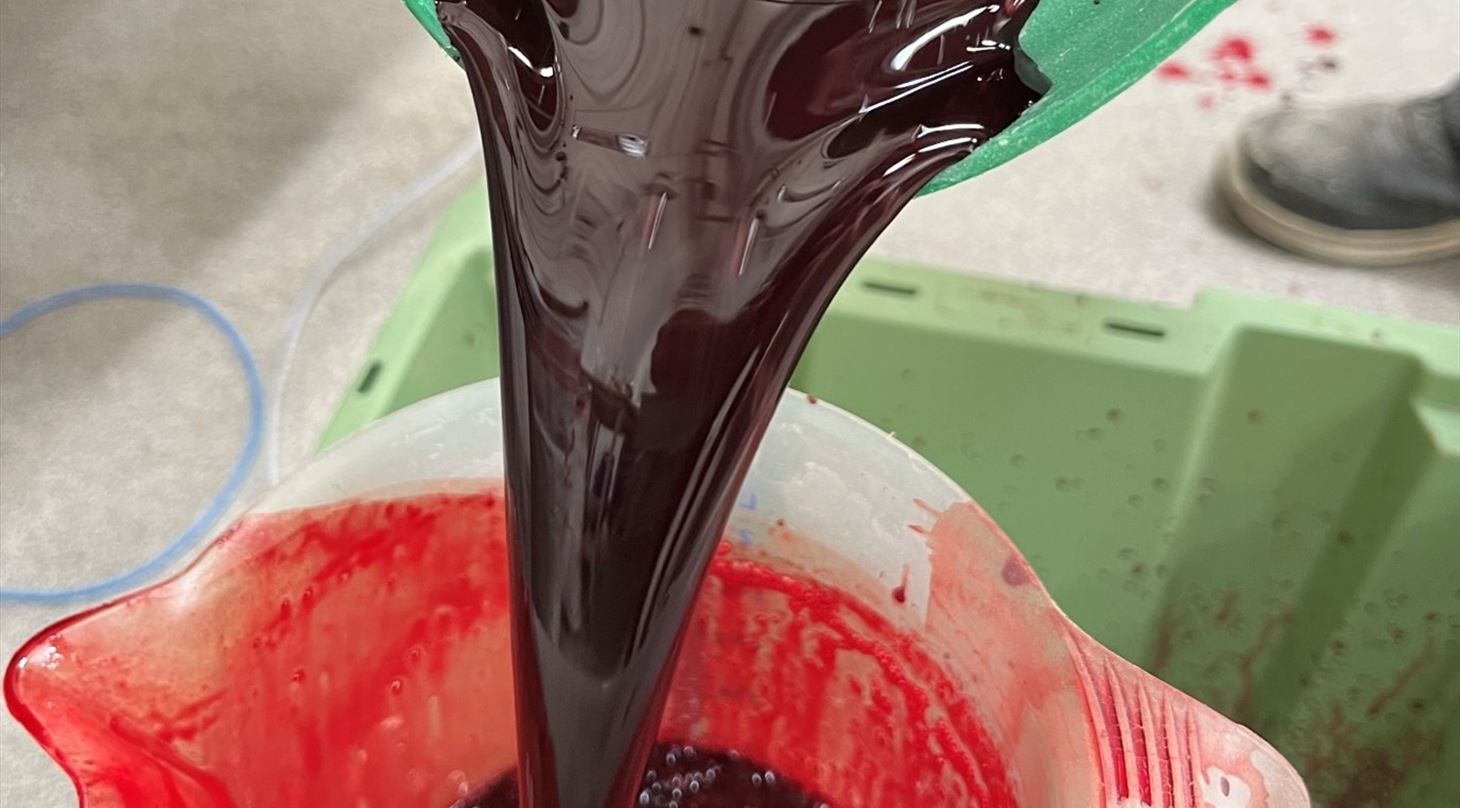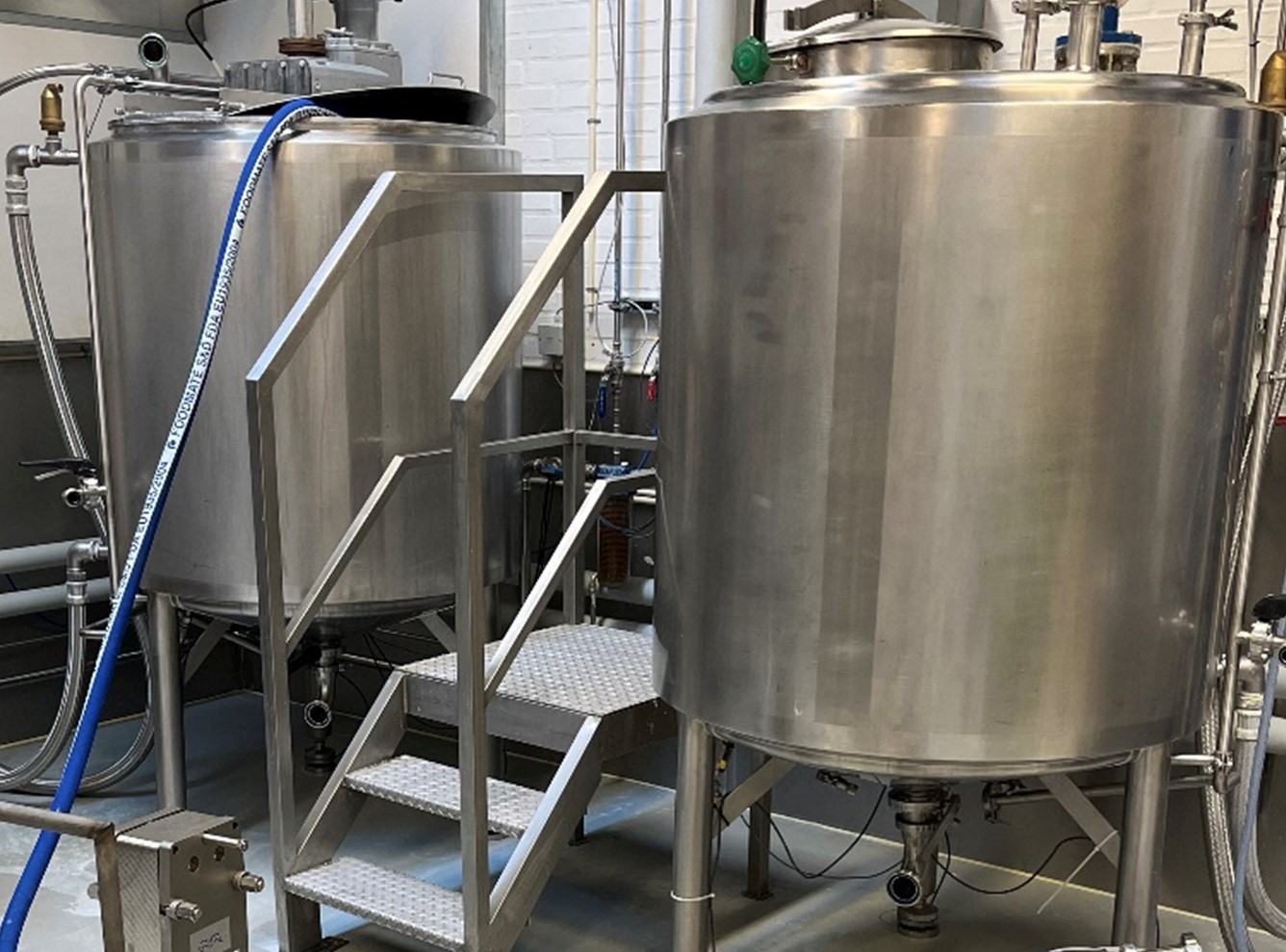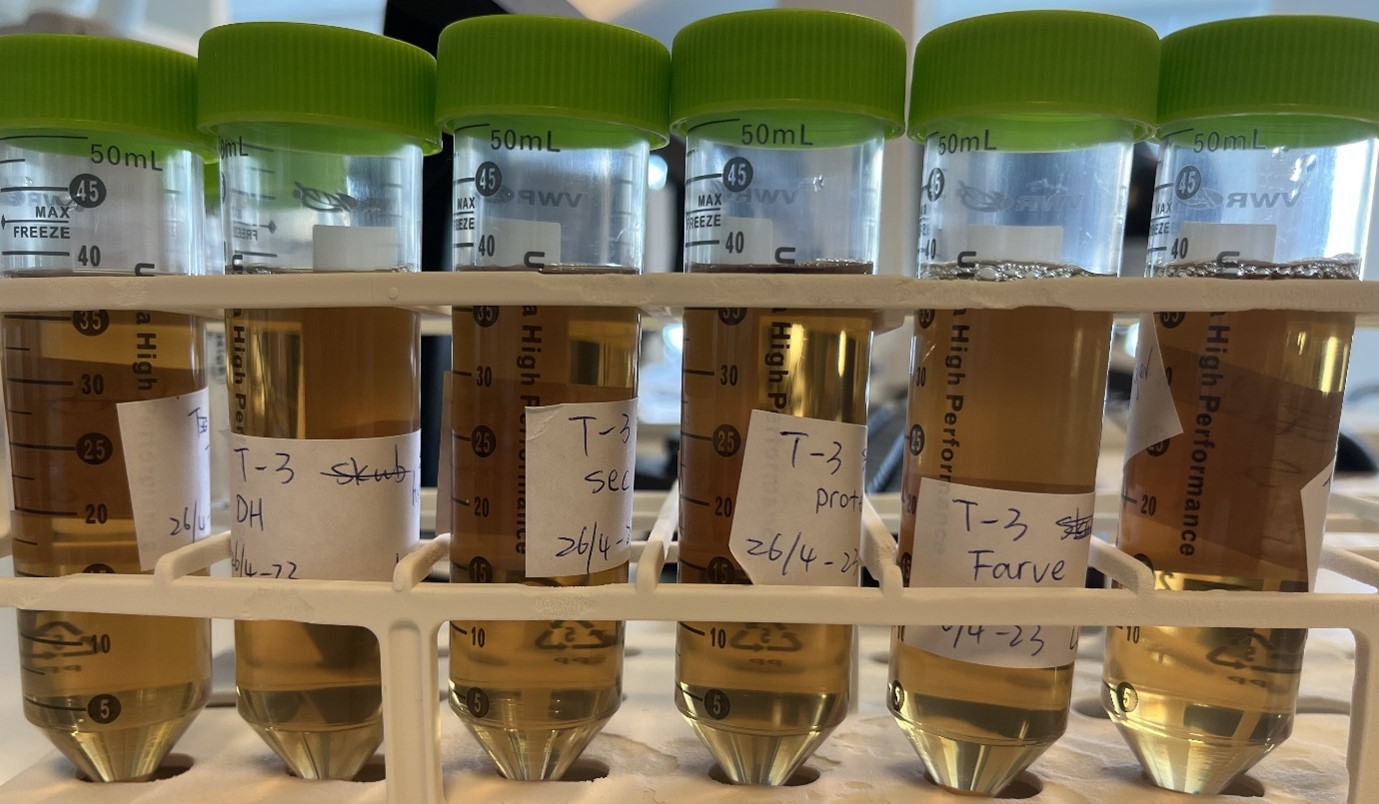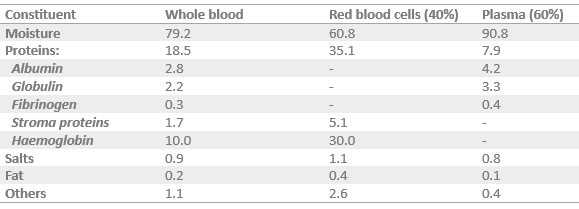
Blood as a nutritional booster in food
At Danish Technological Institute we are determined to upcycle side streams from the meat production industry into high value industrial ingredients. One such side stream is the blood collected from the Danish slaughterhouses, which contain valuable compounds such as protein, haem iron and health improving substances. A main scope has been to find ways to utilise the nutritional blood protein, which is an excellent source of essential amino acids with high bioavailability.
Top photo: Red blood cell fraction
Perspective
In Denmark, 17 million pigs are slaughtered every year, and 50 million litres of blood are collected. The blood contains 18.5% protein. As a reference, meat products contain 16 to 23% protein. The slaughterhouse usually separates the blood into a plasma and a red blood cell fraction. The plasma fraction, a transparent liquid with a neutral taste, is widely used in food ingredients for its foaming, emulsifying and solubilising properties. However, the red blood cell fraction, with its high protein content, is rarely used as a food ingredient because of its dark red colour and metallic flavour. Both characteristics are due to the presence of iron atoms embedded in the haemoglobin – the protein responsible for binding and transporting oxygen from the lungs to the tissue.
Table 1. Chemical Composition of Blood Fractions (g/100g)
Adapted from Mónica Toldrá, Sarah A. Lynch, Romain Couture and Carlos Álvarez, 2019. Blood Proteins as Functional Ingredient, Institute for Food and Agricultural Technology. University of Girona, Girona, Spain. Department of Food Quality and Sensory Science, Teagasc Food Research Centre Ashtown, Dublin, Ireland.
In the current project, we are testing the potential of using the red blood cell fraction in food products with the goal of bringing the technologies from the laboratory to large scale production.
Blood as a food ingredient
The main challenge when considering blood as a food ingredient is its red colour and metallic flavour, which is unappetising to most people. Removing or reducing these attributes and optimally improve the flavour is critical to upcycle the red blood cells into ingredients applicable in food products. In collaboration with colleagues, scientists from across the world and industrial enzyme providers, we have achieved this, using enzymatic hydrolysis processes. In these processes, haemoglobin is broken down and catalysed by proteolytic enzymes, causing the haem iron to be released from the protein. The following acid precipitation and removal of the haem iron by centrifugation result in a transparent liquid containing hydrolysed protein. A further drying process transforms the liquid into a white protein powder.

Figure 2. Dried blood hydrolysate.
Enzymes improve the colour and flavour
With the industrially available enzyme Alcalase, an endo-protease, we managed to break down the haemoglobin and remove the haem iron and thus the colour and metallic taste as well. Breakdown of protein using an endo-protease often has the side effect of generating hydrophobic, bitter tasting peptides, which tend to dominate the overall perceived taste. However, the bitter taste was decreased by further treatment with a specific exo-peptidase, an enzyme that catalyses the release of free amino acids, in particular glutamine, ultimately decreasing the hydrophobicity of the peptides. A further treatment with a third enzyme, a glutaminase that converts glutamine to the umami tasting glutamic acid, resulted in a hydrolysate with a dominating umami flavour. The result indicates that we will be able to produce blood derived products that possess flavour enhancing properties in addition to boosting nutritional value.

Figure 3. Pilot plant facilities used in the project.
Scaling up the process
In our pilot plant facility, we have managed to carry out the hydrolysis process in large, hygienically designed stainless steel tanks and equipment comparable to what is used in industrial scale. The resulting product after iron precipitation and separation was a decoloured and transparent liquid, showing that the process is scalable.

Figure 4. Blood hydrolysate after removal of the haem iron.
The next step is to optimise the large-scale process and to prepare a business case in collaboration with relevant equipment providers in addition to testing more industrially available enzymes.
Haem iron as a supplement
A by-product of the hydrolysis process is the haem iron, which is separated from the protein. The bioavailability of haem iron is known to be 2-7 times higher than none-haem iron, which is available in most iron supplements. Utilising the released haem iron from the hydrolysis process would furthermore significantly improve the business case of making blood derived protein products.
